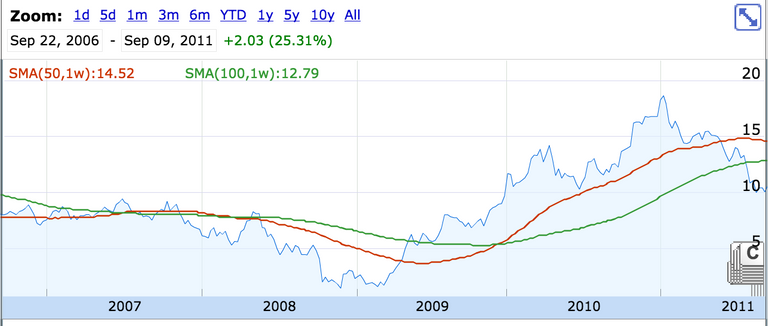At the end of 2008, a couple that are close friends asked me what I thought about putting 10K into Ford Motor Company stock, which had fallen to a couple of dollars. GM and Chrysler were taking federal aid, but the couple just couldn't imagine Ford not making it out of the downturn.
I explained that if I was making that trade, I would need to know why exactly I was taking that position, and why and when exactly I would exit that position. Otherwise, I would be vulnerable to a variety of adverse psychological phenomena that make money disappear.
I didn't hear from them about the subject until several years later when Ford was trading above $10 per share. They expressed regret, saying "we should have bought Ford when it was $2/share." I suppose they either weren't comfortable with their reasons for making the trade at the time or couldn't find an exit strategy that they were comfortable with — so they didn't make the investment.

They have great market instincts and converted their stocks to less volatile holdings just before the bubble burst in 2000. The idea to buy Ford was another right call made on instinct. So, I felt bad about injecting rationality into a decision-making process that for them was working so well. None of us fully understands the market — we have ideas about how it works that may be useful for periods of time.
However, I think that their regret at not making the investment is a psychological trick. It's natural to regret not making investments when you are aware of how they would have turned out. To properly judge such decisions, it's best to consider the reasons for making them, and whether those reasons were sound. If the decisions were based on sound reasoning given the information available to you at the time, then those were good decisions — regardless of the outcome. We can improve decisionmaking by improving the quality of the information and reasoning upon that information.
Some of the best putters and instructors think about putting in a similar way. First, you gather as much information as you can from the green (the speed of the green, the line), then you reason upon that information (where to hit the ball and how hard), then you execute. If you roll the ball properly along your line, then you 'made' the putt — regardless of whether it goes in. Whether the ball goes into the cup is finally determined by an element of randomness and the fact that no one can gather perfect information from a green. Fast forward to 11 minutes 12 seconds to get the gist.